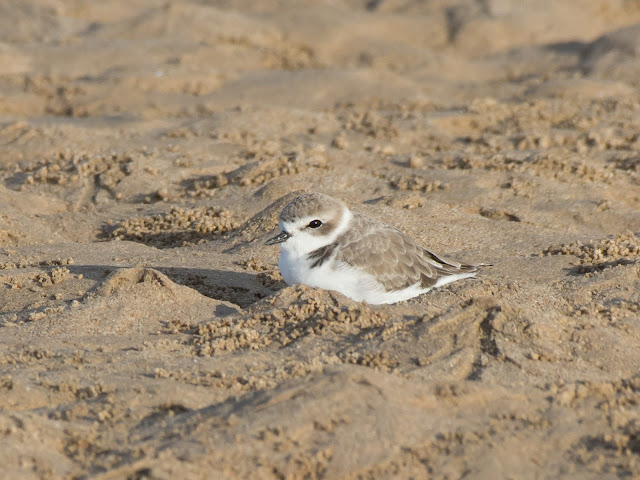Earlier this month, Chris Rohrer and I embarked on a journey to Texas and New Mexico. We had several targets in Texas, but only one target in New Mexico; the Lesser Prairie-Chicken. This species is endangered and for that reason, locations are not posted publicly. I spent some time weeks before our visit in researching on who to contact. I was able to contact the BLM (Bureau of Land Management) in New Mexico and get permission to pay a visit to one of the leks where the males strut about and try their hand at seducing the females. The location we visited is a permission only location, so it is not recommend that people just go in and disrupt this mating ritual. The BLM gave me permission to visit and supplied some very good guidelines on how and when to view them, including the idea of visiting the lek the day before in the afternoon when it was not occupied. That really helped us get a feel for the lek and how to approach it in the dark without lights. We followed those guidelines and it really paid off. I also submitted a couple of survey forms back to them on our experience. Definition of lek is given below, courtesy of Google Definitions..
lek2
/lek/
noun
- 1.a patch of ground used for communal display in the breeding season by the males of certain birds and mammals, especially black grouse. Each male defends a small territory in order to attract females for mating.
Here is a sneak peek of this remarkable bird. They are endangered due to the fact that their populations are very fragmented and also have a threat of destruction of habitat.
We arrived about an hour and 25 minutes before sunrise. We wanted to get there before they started coming in to the lek area. Arriving after they have started, will disrupt the display for that day and in the long run might conceivably disrupt some of their breeding success for the year. That would not a good outcome for an endangered species. At about 5:25 am, we first detected a few clucks of some of the birds that were arriving. We sat in the car with no lights, no engine running and the windows down. (Yes, it was a bit chilly, but in the long run it was totally worth it.) They started getting louder as time went on, even though it was still dark. That is when I made recordings of them. Still too dark and you for sure do not want to use a flash unit or you will spook them. (I almost had a incident, but quickly recovered!) As the sun started coming over the horizon and it got lighter, we had the pleasure of watching the males strut around and clucking and inflating their air sacs and erecting their crests. That is when I took a couple of videos and then started taking photos as the light permitted. As the morning continued to pass, individual females began to fly off from the lek and other into the grassland. The males continued to strut and show off for the few remaining females. At about 7:40 AM, the remaining 7 males all flushed and took off when a Northern Harrier came flying over the lek. Finally that was our queue to leave. Had we left any sooner, we would have spooked the entire population and we did not want to have that happen at the expense of humans. The harrier was a more natural way for them to disband.
Enjoy the following photos and the videos that I have added to YouTube. You will need to click on the links to view the videos, but you will get a better feel for what happens and how they sound with all their clucking and calling.
Videos:
Female
2 Females
Female
This photo and the next appeared to be perhaps a first year male. He was always on the fringes of the activity and trying to strut his stuff, but got chased off countless times. Maybe next year?
Two adult males that spent a considerable time fighting for dominance on one side of the lek,
One photo shows some cages with a male perched on top. They had scattered cages at this location where biologists were capturing and banding many of these birds. My understanding is they are also radio tagging a few of them so they can track their movements throughout the year. You can see that several of them have a lot of bling on their legs. Also wanted to remind anyone that attempts to visit a lek, aviod drinking a lot of liquids, including coffee early in the morning. Sitting the car for almost 3 hours with no way to relieve yourself can get a bit uncomfortable.
This was a memorable experience and one that I will not forget. I will cover the rest of the Texas portion in a separate blog post.








































